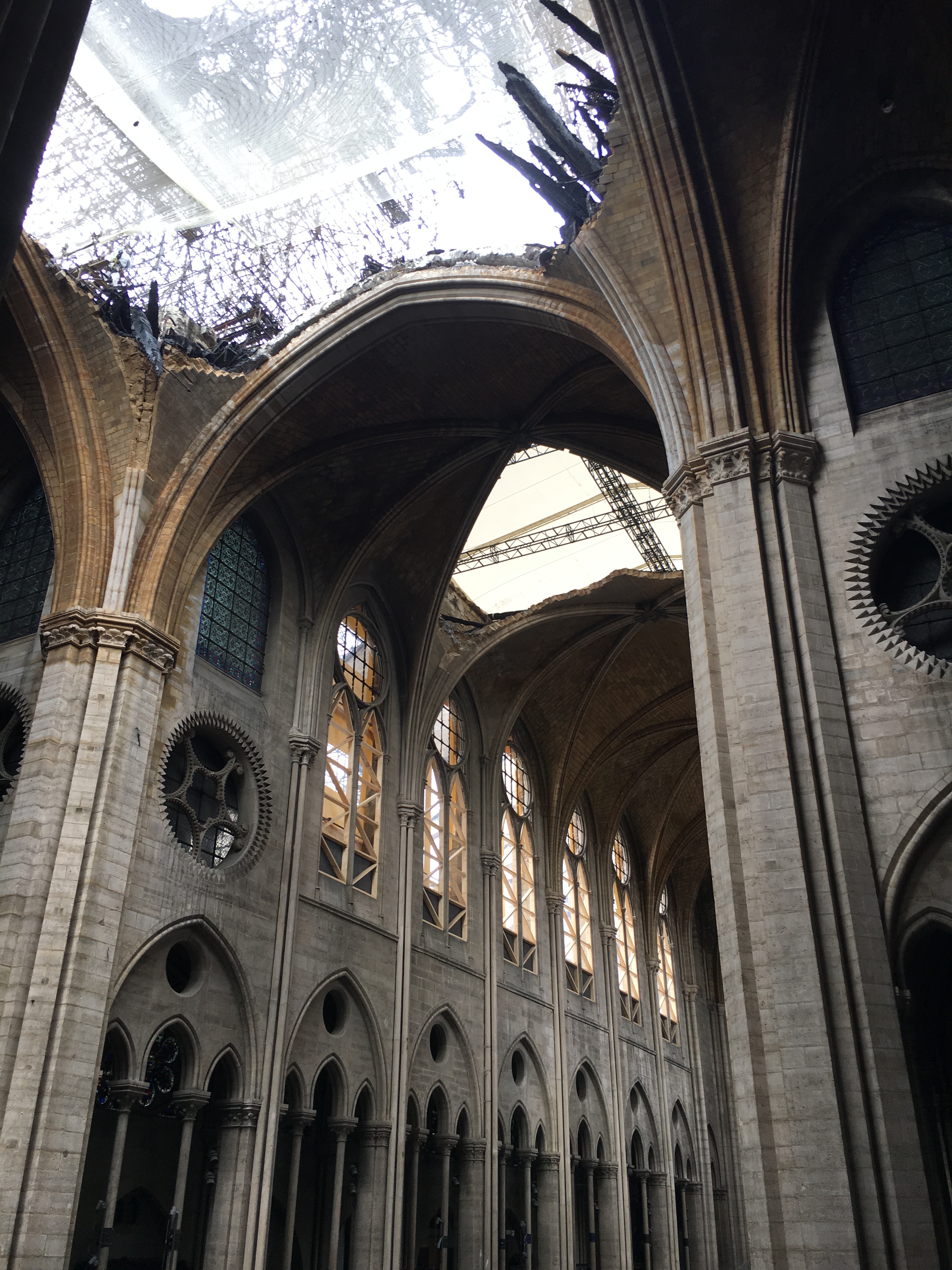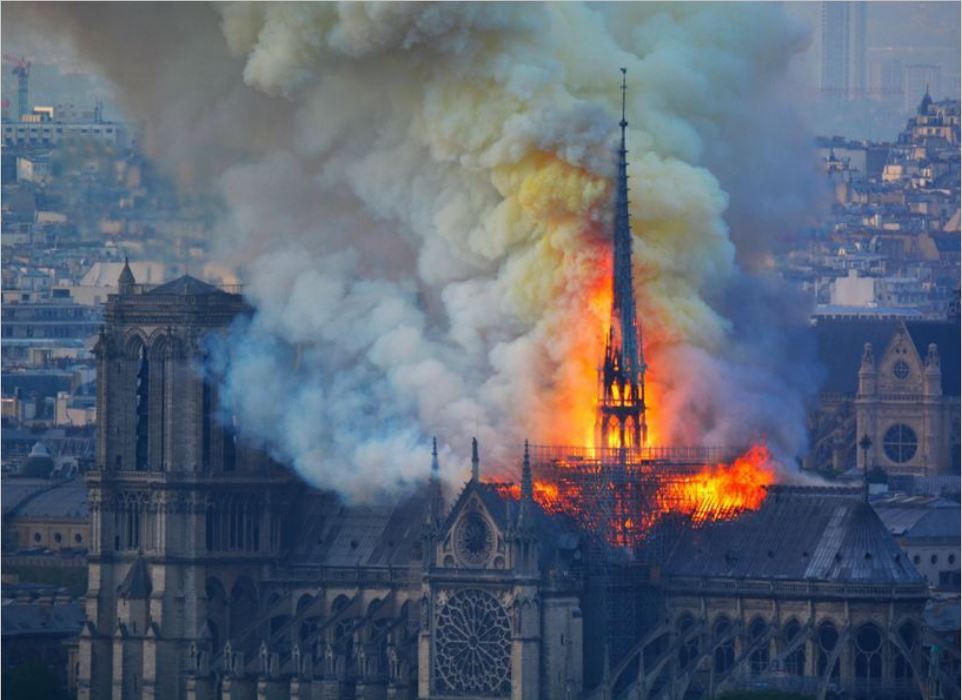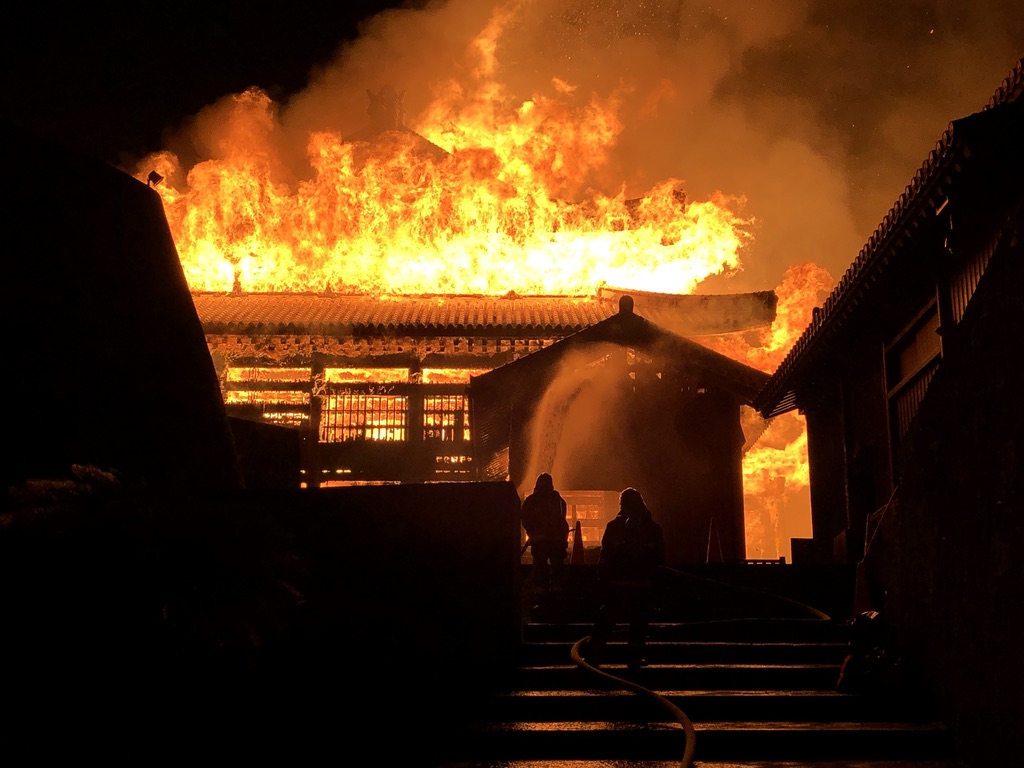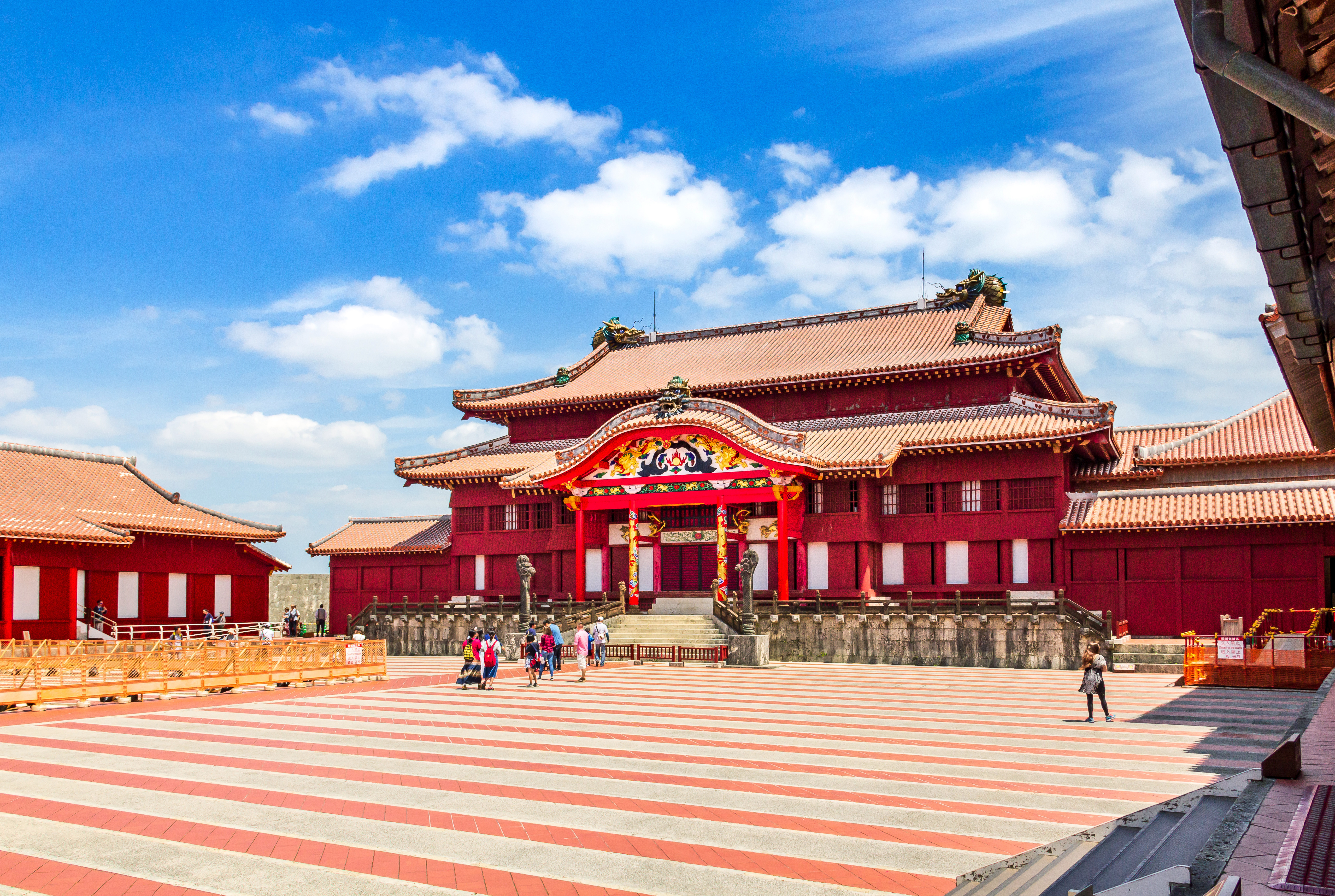Revival after a disaster: The restoration of Notre-Dame de Paris and Shuri-jô Castle

In this context of debates provoked by similar disasters, which affected the two World Heritage properties and public opinion, Professor Toshiyuki Kono at Kyushu University, at-that-time President of ICOMOS, had the idea of organising an exhibition. The exhibition's theme was the post-traumatic reconstruction of these two heritage sites, establishing the parallel between them.
This idea took shape, and cooperation was established between his team at Kyūshū University, ICOMOS France, and invited experts, including the CNRS in the Chantier Scientifique Notre-Dame de Paris and Paris-Sorbonne University.
The launch of the website
This international exhibition, "Revival after a disaster, restoration of Notre-Dame de Paris and Shuri-jô Castle", which was initially intended to travel, has, due to the pandemic, been transformed into a virtual exhibition in three languages: Japanese, French, and English.
The challenges of reconstruction
In both cases, in Japan and France, the decision was made to restore/reconstruct the monuments to their original state.
For what reasons? With what consequences for the heritage and societal value of the buildings? This decision may seem to break with the doctrines of heritage conservation based on material authenticity since the historical material disappeared in the fire. And yet, public opinion was unhesitatingly in favour of returning the buildings to their pre-fire state, and public decision-makers agreed. Why?
This virtual exhibition offers a concrete opportunity to discuss the act of restoring post-traumatic heritage through these two emblematic cases by reflecting on the responses of both countries to the destruction.
The exhibition not only provides pictures of the current damage but also outlines the history and evolution of the two monuments, with necessary references to (international) restoration philosophy and how the approach to restoration has evolved over time. It also discusses how people reacted to the fires, their emotions, and memories, and finally, the current reconstructions and works visualized and tested against the concept of authenticity.
Shuri-jô and Notre-Dame de Paris: two modern examples
Heritage is made of the materialities of its construction; the wear and tear of time and use; and human experiences, emotions, memories, and attachments. It is intangible as much as tangible.
Notre-Dame and Shuri-jô, overcoming the deep wounds of the fires that affected them, were able to achieve their rebirth thanks to the strength of their historical and social architectural values. They significantly contribute to the doctrinal evolution of heritage conservation and to the central role of intangible value.
The France-Japan scientific symposium available on YouTube
The scientific symposium marking the website launch took place live in Japan and France on 14-15 March 2022. It brought together the best experts from both countries and 180 Internet viewers.
First, the damage inflicted on the two monuments was examined. Then, in the second session, their long history and evolution over time were presented, with the necessary references to the philosophy of (international) restoration and the way the approach to rehabilitation has evolved.
Then, people's reactions to the fires, emotions, and memories were analysed at length, as essential elements that weighed heavily in the decision to rebuild the monuments as they were.
The fourth and last session was devoted to the reconstruction sites and the current work, visualized and tested against the concept of authenticity.
The presentations and debates have been transcribed fully and published on YouTube in three languages (French, Japanese, and English).
Speakers:
For the French part:
- Jean-François Lagneau, Chief Architect of Historic Monuments, Honorary General Inspector of Historic Monuments, former President of ICOMOS France;
- Martine Regert, Director of Research, CNRS, CEPAM (UMR 7264), Co-coordinator of the Notre-Dame de Paris Scientific Workshop;
- Philippe Villeneuve, Chief Architect of Historic Monuments, in charge of Notre-Dame de Paris;
- Benjamin Mouton, Chief Architect, Honorary General Inspector of Historic Monuments, former ACMH of Notre-Dame, former Vice-President of ICOMOS, former President of ICOMOS France;
- Dany Sandron, Professor of Art History and Archaeology of the Middle Ages at Sorbonne University (Centre André Chastel);
- Gilles Drouin, Institut Supérieur de Liturgie - Delegate of the Archbishop of Paris for the liturgical and cultural development of Notre-Dame Cathedral;
- Alexis Giroud, Architect, Pascal Prunet Agency;
- Rémi Fromont, Chief Architect of Historic Monuments, associated with Notre-Dame;
- Marie-Hélène Didier, General Curator of Historic Monuments, DRAC Ile-de-France;
- Dominique Schneider, former Secretary General of ICOMOS France;
- Sylvie Sagnes, CNRS researcher, Héritages (UMR 9022, CNRS, MC, CYU), Notre-Dame de Paris Scientific Workshop;
- Claudie Voisenat, research engineer, Ministry of Culture, Héritages (UMR 9022, CNRS, MC, CYU), Notre-Dame de Paris Scientific Workshop;
- Dorothée Chaoui-Derieux, chief heritage curator, DRAC Ile-de-France, regional archaeology department, Notre-Dame de Paris scientific site;
- Gaspard Salatko, post-doctoral fellow, Fondation des sciences du patrimoine, Notre-Dame de Paris Scientific Workshop.
For the Japanese part:
- Toshiyuki Kono, Distinguished Professor at Kyūshū University, former and Honorary President of ICOMOS;
- Junko Mukai, architect, heritage specialist;
- Kurayoshi Takara, Professor Emeritus of the University of the Ryukyus. Chairman of the Technical Committee for the Reconstruction of Shuri-jô Castle established by the Japanese government, Ryukyu historian.
- Alejandro Martinez de Arbulo, Assistant Professor, Department of Design and Architecture, Kyoto Institute of Technology.
- Junko Okahashi, Associate Professor, University of the Sacred Heart, Tokyo.
General Jean-Louis Georgelin, General of the Army, President of the Public Establishment in charge of the restoration and conservation of Notre-Dame de Paris, closed the conference.
See more:
![]() The virtual exhibition "Revival after a disaster, restoration of Notre-Dame de Paris and Shuri-jô Castle" official website
The virtual exhibition "Revival after a disaster, restoration of Notre-Dame de Paris and Shuri-jô Castle" official website
![]()
The International Symposium recordings on YouTube
Photo credits:
1. Notre-Dame de Paris' interior devastated © Philippe Villeneuve
2. The fire at Notre-Dame © Emmanuel Fournier
3. The fire at Shuri-jô Castle © National Okinawa Memorial Park Office (Shuri-jô Park)
4. Shuri-jô Castle before the fire © All rights reserved



